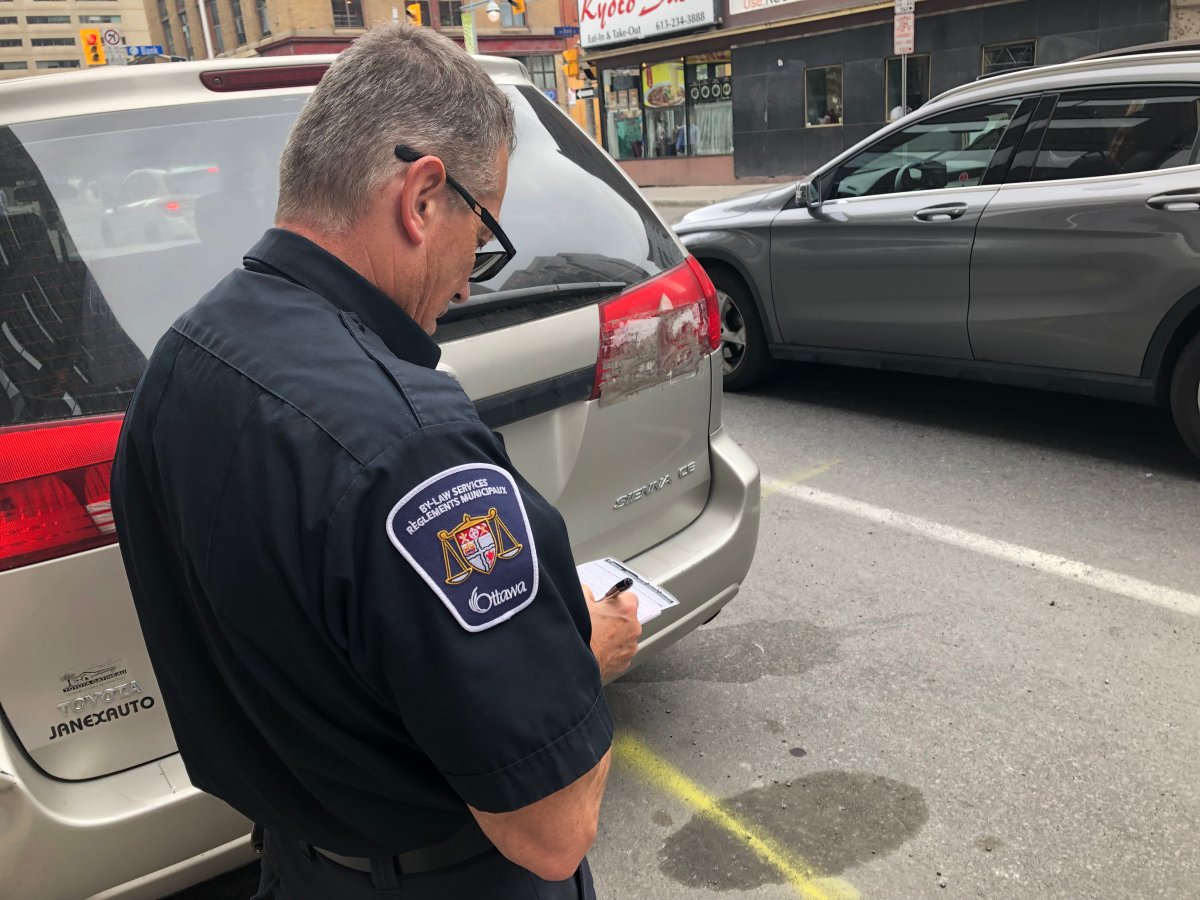The City of Ottawa put drivers on notice Monday as it kicked off a two-week traffic and parking enforcement blitz downtown that it hopes will keep traffic flowing as smoothly as possible in the city’s bottle-necked core.

“If you’re caught in a no-stopping zone, you will be ticketed and you will be towed.”
No matter if you’re cycling, driving a car or riding a bus, the city has acknowledged it’s not easy to roll around the centre of Ottawa at the moment. A number of ongoing road closures and construction projects – such as the near-total closure of Elgin Street – are making it difficult for commuters to enter, cross and exit the downtown area.
To boot, the summer construction season is ramping up, the closure of the Chaudière Bridge to motorists has added extra pressure onto interprovincial crossings, and the delay of the Confederation LRT line is keeping buses moving bumper-to-bumper along the Albert and Slater transit corridors.

Citing these traffic pressures and congestion, the mayor and the city announced a temporary “downtown mobility plan” on Friday afternoon, saying it will help “improve mobility” for all modes of transportation.
As part of the escalated enforcement measures, extra bylaw and police officers, along with OC Transpo transit supervisors, will be monitoring busy areas during the morning and afternoon rush hours in an effort to make sure bus lanes, bike paths, “no-stopping zones” and major intersections remain clear, and drivers are complying with turn restrictions at major crossings.
Later on Monday, Sandor confirmed parking control officers issued a total of 101 tickets to drivers who parked in “no-stopping zones” downtown during the blitz’s first day, four of which were for stopping in a bus zone.
About 42 per cent of those tickets were written up during afternoon rush hour traffic, according to numbers provided by Sandor. As of 3 p.m., at least six vehicles had towed for parking in ‘no-stop’ areas, she told reporters.
The city says it’s only conducting the blitz for two weeks because it expects to see traffic volumes go down once the school year wraps up and the summer holiday season begins.
Sandor said she’s not sure if city officials will choose to extend the extra enforcement measures beyond the two-week mark, but she emphasized that, blitz or not, bylaw officers are marching around Ottawa’s downtown streets on the regular.

Get daily National news
“Don’t think that after this blitz is over that we don’t have any officers in the downtown core,” she told reporters, noting bylaw had issued around 4,000 tickets and towed more than 60 vehicles for parking infractions in the area since March 1.
“We will be here every single day like usual, like clockwork. You can count on it.”

Sandor said she wasn’t at liberty to share how many more bylaw officers than usual were out patrolling the streets on Monday, but she said it’s “a significant amount more.”
Bylaw officers issue a $120 ticket for parking in a no-stopping zone, according to Sandor. If the vehicle is hauled away, the driver gets another $55 bill for the towing charge and the impound fee is about $30 a day, she said.
Want to avoid finding a ticket tucked under your windshield wipers? If you’re downtown, don’t stall in or block lanes reserved for buses and cyclists, and take extra care to read parking signs for morning and afternoon restrictions, Ottawa bylaw says.
Many parking spots on busy roads, for example, do allow parking between 9 a.m. and 3 p.m. but are book-ended by restrictions from 7 a.m. and 9 a.m, and then 3 p.m. to 6 p.m.
Sandor explained that parking signs should be read from top to bottom, saying the topmost sign typically trumps any rules on the signs below.
What you can expect to see downtown over the next two weeks:
- Parking control officers will cycle around and monitor congested areas.
- During the afternoon rush hour, Ottawa police officers will monitor the bus lanes on Albert and Slater streets, enforce turn restrictions at “key” intersections, and ensure two major intersections near the University of Ottawa (at Laurier Avenue and Nicolas Street, and at Waller Street and the Mackenzie King Bridge) remain clear.
- Tow trucks will be “placed at strategic locations” and will remove cars in no-stop zones at Ottawa bylaw’s direction.
- There will be additional traffic signs installed along Albert, Slater and Queen streets, including tow-away signs in no-stop areas and an eastbound no-right-on-red sign at Bank and Queen.
Changes to traffic and OC Transpo monitoring:
- The city is placing a moratorium on issuing road cut or encroachment permits in the downtown core “that would impact the morning and afternoon peak period traffic flows.”
- A traffic management inspector will patrol the streets to “ensure no construction or encroachment activities occur during the morning and afternoon peak periods.”
- More transit supervisors will monitor the Albert and Slater transit corridors on the ground.
- More transit supervisors will manage bus and operator resources during the morning and afternoon rush hours from the Transit Operations Control Centre.
- An employee at the city’s Traffic Control Centre will monitor traffic flows downtown during rush-hour periods and “make signal timing adjustments as required.”

















Comments